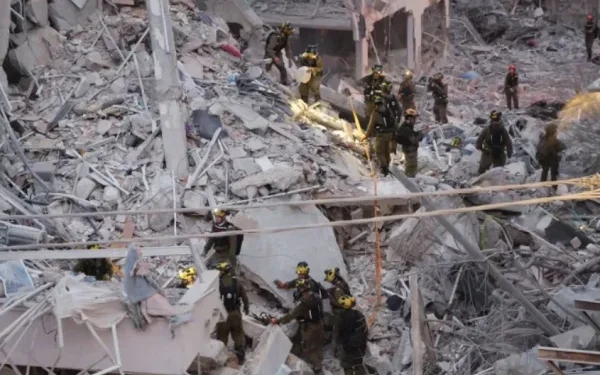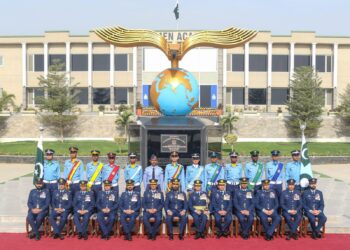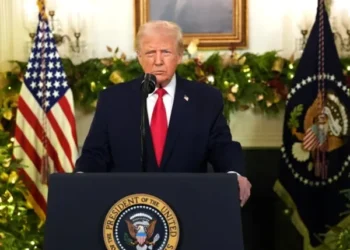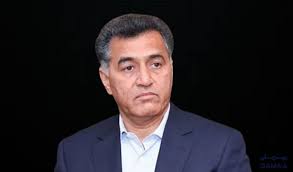In a significant escalation of hostilities in the Middle East, Iran has launched a large-scale missile and drone attack on Israel, resulting in the deaths of at least 10 people and injuries to more than 200 others. The assault, which Iran has described as part of its ongoing retaliatory operation “Promise of the Righteous III,” targeted several key locations in Israel, including the northern city of Haifa and neighboring areas.
Details of the Missile Attack
According to Iran’s official state media outlet, IRNA News, Iran launched more than 100 supersonic and ballistic missiles at Israel late last night. The missile barrage triggered air raid sirens across multiple Israeli cities, sending residents scrambling to bomb shelters as explosions rocked the skies.
In the port city of Haifa, which lies along Israel’s northern Mediterranean coast, a number of missiles made direct impact, causing substantial damage and civilian casualties. Israeli news outlet Channel 13 confirmed that the neighboring town of Tamer was also struck. The Times of Israel corroborated these reports, stating that a ballistic missile struck a two-story residential building in Tamer, initially killing one person. The death toll later rose to four as emergency crews combed through the wreckage.
Another heavily impacted area was Beit Yam, where six people were killed in the wake of a missile strike. Channel 12 reported that seven individuals are still missing in the aftermath of the attack, and search and rescue operations are ongoing. More than 200 civilians have been confirmed injured, many of them in critical condition.
Iran’s Military Operation “Promise of the Righteous III”
The Islamic Revolutionary Guard Corps (IRGC) of Iran announced the offensive as a direct response to recent Israeli actions, including drone strikes that set off a significant fire at the Haifa oil refinery. According to IRGC statements on Telegram, the Aerospace Force of the Guards launched the missile and drone barrage as part of a wider military campaign aimed at degrading Israel’s strategic assets.
Revolutionary Guards spokesman Brigadier General Ali Mohammad Naini addressed the media in a live broadcast, confirming that the attack targeted Israeli fighter jet fuel production facilities and critical energy infrastructure. He added that multiple locations across Israel, including military and industrial zones, were selected for the strikes.
The IRGC claims that their aerospace defense systems also successfully intercepted several Israeli responses, downing three cruise missiles, ten drones, and dozens of smaller unmanned aerial vehicles.
Previous Retaliatory Operation: Odeh Sadeq 3
This is not the first wave of retaliatory action from Iran. A day prior to the most recent attacks, Iran launched a similar operation named “Odeh Sadeq 3,” in which missile attacks were carried out on various Israeli targets, including the Israeli nuclear research facility and the headquarters of the Israel Defense Forces (IDF) in Tel Aviv.
In that operation, five Israeli citizens were killed, including a woman, and over 170 were injured. Several key buildings were also reduced to rubble, further escalating the already tense situation between the two nations.
Footage and International Reactions
Viral videos circulating on social media, later confirmed by Qatari news outlet Al Jazeera, showed Iranian cruise missiles streaking across the skies of northern Israel. The visuals have caused widespread alarm, showcasing the scale and coordination of the Iranian offensive.
In response to the missile strikes, the Israeli military instructed citizens to remain in safe zones and not leave shelters until further notice. Hospitals across the affected areas have been placed on high alert, and emergency services have been mobilized in full force.
The international community has expressed grave concern over the latest round of hostilities. Countries including the United States, France, and the United Kingdom have called for immediate de-escalation and restraint from both sides. However, the strategic messaging from Iran suggests that further strikes could be expected if what they describe as “Israeli aggression” continues.
Strategic Implications and Escalation Risks
Iran’s growing willingness to engage in direct military confrontation with Israel marks a serious shift in Middle East dynamics. While proxy battles and covert operations have been the norm, the scale and transparency of the current attacks indicate a readiness to escalate beyond conventional boundaries.
Analysts suggest that the choice of Haifa and surrounding regions is strategic, given the area’s industrial and military significance. Haifa is home to several refineries, a major naval base, and defense-related industries, making it a high-value target for Iran’s aerospace units.
Brigadier General Naini has warned that if Israeli aggression persists, Iran’s armed forces will continue their offensive with greater “intensity and scale.” This has raised fears that the region could be heading toward a full-scale war, involving not just Iran and Israel but potentially other regional actors such as Hezbollah, Hamas, and allied forces.
The Role of the IRGC and Iran’s Missile Capabilities
The Islamic Revolutionary Guard Corps (IRGC) is the principal military organization responsible for Iran’s external operations. Over the years, the IRGC has developed an extensive arsenal of ballistic and cruise missiles, as well as advanced drone technologies.
Military experts suggest that the deployment of both supersonic and hypersonic missiles demonstrates Iran’s advanced technological capabilities. Supersonic missiles can travel at speeds exceeding Mach 1, while hypersonic weapons can fly at speeds over Mach 5, making them extremely difficult to intercept.
According to recent defense assessments, Iran’s missile programs have been developed domestically to counter international sanctions and embargoes, giving it a significant edge in regional deterrence.
Conclusion: A Turning Point in Iran-Israel Relations?
The unprecedented scale of Iran’s latest missile attacks on Israel has marked a turning point in the long-standing animosity between the two nations. With dozens of fatalities, hundreds injured, and widespread infrastructural damage, the region stands on the precipice of a broader conflict.
While both sides claim to be acting in self-defense, the human cost continues to rise. With no immediate diplomatic breakthroughs in sight, the coming days will be critical in determining whether the conflict escalates further or if cooler heads can prevail to broker peace.
The global community remains watchful, with urgent calls for ceasefire and negotiations gaining momentum. Whether those calls are heeded remains to be seen, but what is certain is that the Middle East has once again become a flashpoint that threatens global stability.

























